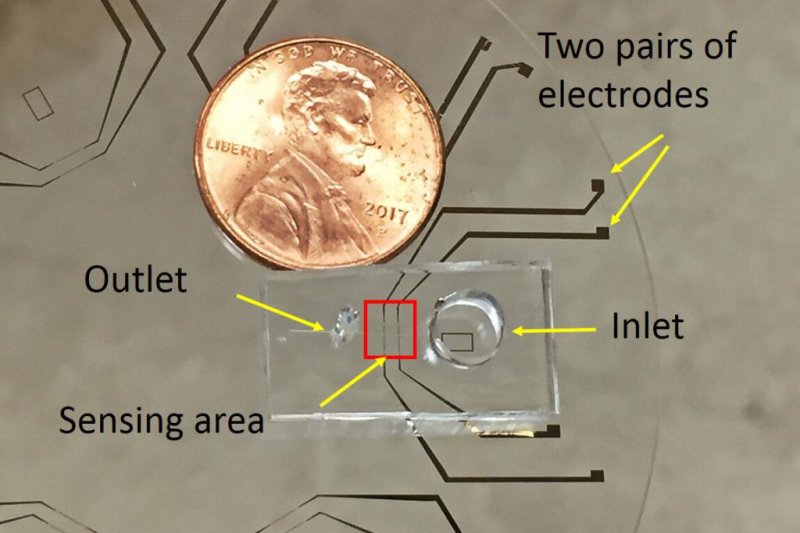The device features tiny micro-channels just big enough for microbial cells to pass through one at a time. Photo by Jianye Sui/Rutgers University
Jan. 27 (UPI) -- Scientists at Rutgers University have developed a small, mobile device capable of quickly analyzing microbes present in a variety of watery environments.
The technology was originally designed to study algae and its relationship with coral. The device, which can be used in the lab or in the field, can measure the effects of environmental stressors, like pollution or increases in water temperature, on microbes and cells.
Scientists described the new device in a paper published Monday in the journal Scientific Reports.
"This is very important for environmental biology, given the effects of climate change and other stressors on the health of microorganisms, such as algae that form harmful blooms, in the ecosystem," study author Mehdi Javanmard, an expert in nanotechnology and an associate professor of electrical and computer engineering at Rutgers University-New Brunswick, said in a news release.
Researchers wanted a way to quickly observe the health of cells in ocean samples without deploying big, expensive technologies like genomic sequencing tools.
"Being able to assess and understand the status of cells, without having to send samples back to the lab, can allow the identification of threatened ecosystems based on a 'stress index' for their inhabitants," said co-author Debashish Bhattacharya, a distinguished professor in the Department of biochemistry and microbiology at Rutgers.
To test the new device, scientists used Picochlorum, a common green microalga, as the subject. Scientists deployed the technology while subjecting microalga cells to a variety of environmental conditions. The tool successfully determined whether the cells were stressed, energized or unaffected.
The tool features tiny channels, through which microbes pass one-by-one. As they pass through the micro-channel, a sensor measures the disruption of the device's electrical field, or impedance, which offers clues to the cell's size and physiological state.
"Our results demonstrate the utility of electrical impedance as an indicator of cell phenotype by providing results that are consistent with known changes in cell size and physiology," researchers wrote in their paper.
In addition to studying algae, the technology could also be used to screen for food-borne pathogenic bacteria, antibiotic resistant bacteria and other harmful microbes.















